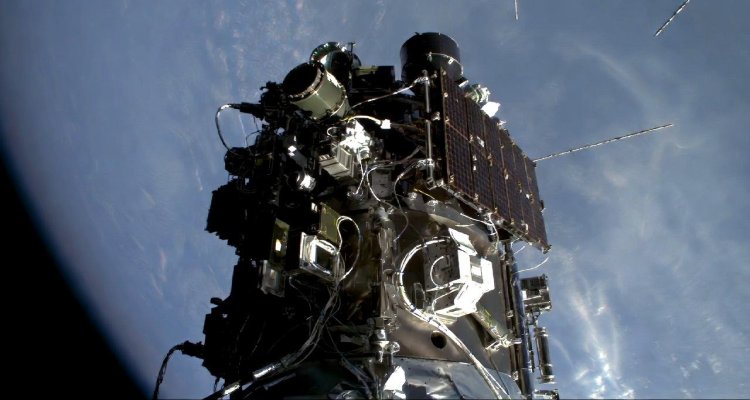Animals That Navigate Using Powers We Can’t Yet Explain
Introduction: The Mysteries of Animal Navigation
On a moonless night, a tiny songbird launches itself into the sky, embarking on a journey spanning thousands of miles. Across the ocean, a sea turtle returns unerringly to the very beach where it hatched decades earlier. Deep beneath the waves, a shark steers a nearly straight course between distant continents, guided by forces invisible to human instruments. These almost mythic feats of navigation aren’t just astonishing—they challenge our fundamental understanding of animal senses and the very definition of “map” and “compass.”
Animals making long, complex journeys often rely on powers and abilities we can barely observe and certainly cannot mimic. While humanity boasts GPS satellites and sophisticated maps, much of wildlife still navigates by a code yet to be cracked—a realm where physics, biology, and perhaps even quantum mysteries converge.
Context & Background: Charting the Uncharted
For centuries, naturalists marveled at migrations: the Monarch butterfly’s annual trek from Canada to Mexico, Arctic Terns crossing from pole to pole, European eels traveling from European rivers to the Sargasso Sea, and the legendary homing pigeon always returning home.vocal+2
Traditional explanations leaned on landmarks, the position of the sun, the stars, and even keen memory. But as researchers began to test these animals—displacing them across continents, removing visual cues, and altering environmental variables—a profound mystery emerged: many navigators were returning home with pinpoint precision even in conditions devoid of familiar landmarks or celestial guidance.link.springer+2
This triggered decades of pioneering research into “magnetoreception”—the ability to sense and use Earth’s magnetic field—a skill so foreign to human perception it seems almost supernatural.scientificamerican+3
Main Developments: Unexpected Powers Across the Animal Kingdom
Magnetic Mastery
-
Sea Turtles: Loggerhead turtles hatch on Florida beaches, cross the Atlantic, then return decades later. Dr. Kenneth Lohmann’s research shows they imprint on the magnetic signature of their birthplace and use it as a biological GPS to navigate both latitude and longitude.sciencedirect+1
-
Sharks: Great white sharks can travel thousands of miles nearly in a straight line. Magnetoreception studies reveal sharks use the Earth’s magnetic field like a built-in compass, steering them between feeding and breeding grounds.science+1
-
Lobsters: Caribbean spiny lobsters display “true navigation,” orienting themselves correctly even when displaced to unfamiliar sites and deprived of all familiar orientation cues, thanks to their magnetic sense.link.springer
-
Rainbow Trout & Salmon: Tiny compass needles—magnetite crystals—have been found in rainbow trout noses. Field studies show salmon orienting themselves by Earth’s magnetic field, suggesting widespread geomagnetic navigation among fish.livescience+1
Celestial & Quantum Clues
-
Birds: Migratory species like the Arctic Tern and Manx Shearwater use the sun, stars, and even polarized light for orientation. Indigo Buntings and other songbirds follow night skies and can navigate by constellations, a skill so robust some perform cross-ocean journeys even as fledglings.wikipedia+2
-
Dung Beetles: Astonishingly, dung beetles in Africa use the Milky Way to maintain a straight path away from competition, rolling dung balls in a line guided by the galaxy’s glow. On cloudy nights, these insects lose all navigational ability and simply wait for starlight.discovermagazine+1
Inexplicable Examples
-
Desert Ants: Species like Cataglyphis combine step counting (path integration), solar navigation, and polarized light detection to cross vast, featureless deserts and return precisely to their nests.vocal+1
-
Eels: European eels travel 4,000 miles to spawn in the Sargasso Sea. Magnetoreception is suspected, alongside olfactory cues, but the full method remains a mystery after decades of research.nationalgeographic+1
Expert Insight & Public Reaction
Researchers worldwide are captivated—and occasionally confounded—by these powers. Dr. Michael Winklhofer, a biophysicist from Germany, says, “All the other major senses have been described and understood. The key question is how do they do it?” Some propose magnetite crystals in noses, while others explore proteins in the retina that respond to magnetic fields.link.springer+2
Biologist Kenneth Lohmann notes, “Sea turtles have an internal magnetic map. They detect both the intensity and the inclination angle of Earth’s magnetic field—the exact coordinates—allowing them to pinpoint home beaches with astonishing precision.”
Popular sentiment mixes awe and aspiration. Nature lovers and animal trainers often witness remarkable feats in pets and wildlife, sometimes interpreting them as psychic or preternatural powers. Scientists caution that these events likely have a basis in bio-physical mechanism, but concede that not all is known—and some may border on the genuinely unexplained.ru+1
Impact & Implications: What’s Next?
Scientific Innovation:
Cracking the code of animal navigation could lead to breakthroughs in neuroscience, biophysics, quantum biology, and even technology. Imagine navigation systems or data transmission methods inspired by these natural phenomena—eco-friendly, precise, and endlessly reliable.
Conservation:
Understanding how animals orient can help preserve migratory routes, breeding grounds, and even guide conservation strategies amid climate change and habitat loss.
Philosophical & Cultural Shifts:
Revelations about animal senses challenge the distinction between humans and other creatures, fueling philosophical debates on consciousness, sentience, and the nature of intelligence in the animal kingdom.
For Everyday Humans:
From engineers to philosophers, and travelers to artists, the marvels of animal navigation invite us to reconsider our place in nature—and the limits of what science can explain.
Conclusion: Looking Ahead to Unlock Nature’s Deepest Maps
Despite remarkable progress, major questions remain: How do brains process the swirl of magnetic, celestial, and chemical cues? Are there quantum effects or unknown biological sensors at play? As new technologies—like quantum imaging, micro-sensors, and AI—enter the field, scientists are one step closer to discovering the secrets that allow animals to cross uncharted wilderness, trackless deserts, and endless oceans.
Until then, the next time you spot a migratory bird, marvel at a turtle’s return, or witness a beetle rolling in the dark, remember: they navigate by enduring powers—and mysteries—we’re only just beginning to fathom.
Disclaimer :This article is intended for informational purposes only. Opinions of experts quoted herein do not represent medical or veterinary advice. All information is based on reputable sources and up-to-date research as of August 2025.













